Imagine stepping into your kitchen and being greeted by the vibrant scents of basil, mint, and rosemary, right at your fingertips. Whether you’re a novice just getting your hands dirty or a seasoned gardener with a green thumb, “Creative Ways to Grow Herbs in Your Kitchen” offers innovative techniques to cultivate these delightful plants in the heart of your home.
This guide will open up a world of possibilities, showcasing how you can transform even the smallest spaces into lush, aromatic gardens. The joy of plucking fresh herbs for your culinary creations is unmatched, and with our easy-to-follow tips, you’ll soon enjoy the practical benefits of homegrown flavor and fragrance.
Here, you’ll discover the satisfaction that comes from nurturing your own herb garden, while gaining valuable insights to ensure success at every stage. Embrace the art of indoor gardening and feel confident as you explore new and exciting ways to bring nature indoors, enriching both your kitchen and your lifestyle.
Install Windowsill Herb Planters
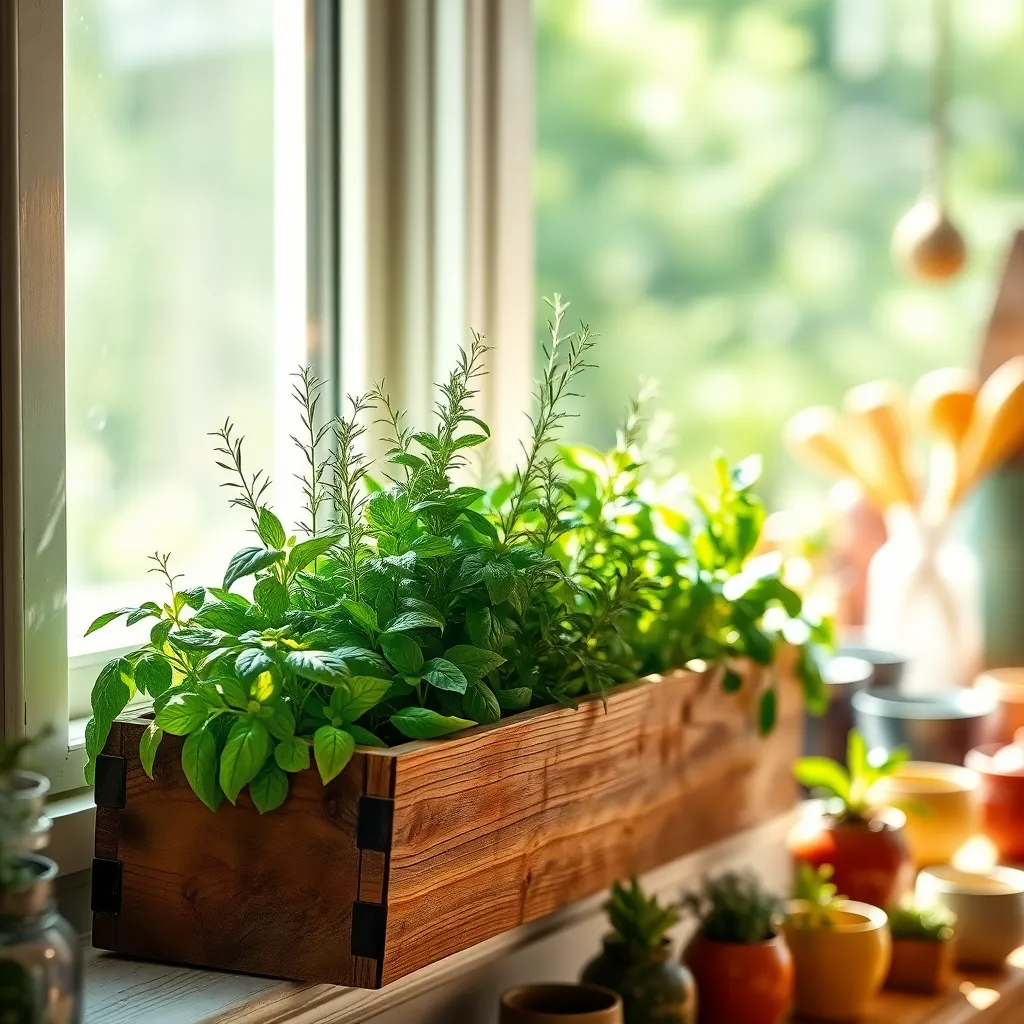
Installing windowsill herb planters is an excellent way to keep fresh herbs at your fingertips while adding greenery to your kitchen. Begin by choosing a sunny windowsill that receives at least six hours of sunlight per day, ensuring your herbs thrive with the light they need.
Choose planters that have good drainage to prevent waterlogging, which can harm herb roots. You can use pots with drainage holes or place a layer of gravel at the bottom of pots without holes to help with excess water management.
For soil, use a high-quality potting mix that is light and well-draining, as herbs prefer not to sit in soggy conditions. Mixing in a bit of perlite or sand can improve drainage further, which is crucial for healthy herb growth.
Water your herbs when the top inch of soil feels dry to the touch, but be careful not to overwater. Herbs like basil and mint thrive with consistent moisture, while rosemary and thyme prefer to dry out a bit between waterings.
Regularly harvest your herbs by pinching back the tops to encourage bushier growth, which results in more herbs for your culinary use. For advanced gardeners, consider rotating planters occasionally to ensure all parts of the plant receive even sunlight, promoting uniform growth.
Utilize Hanging Mason Jar Gardens
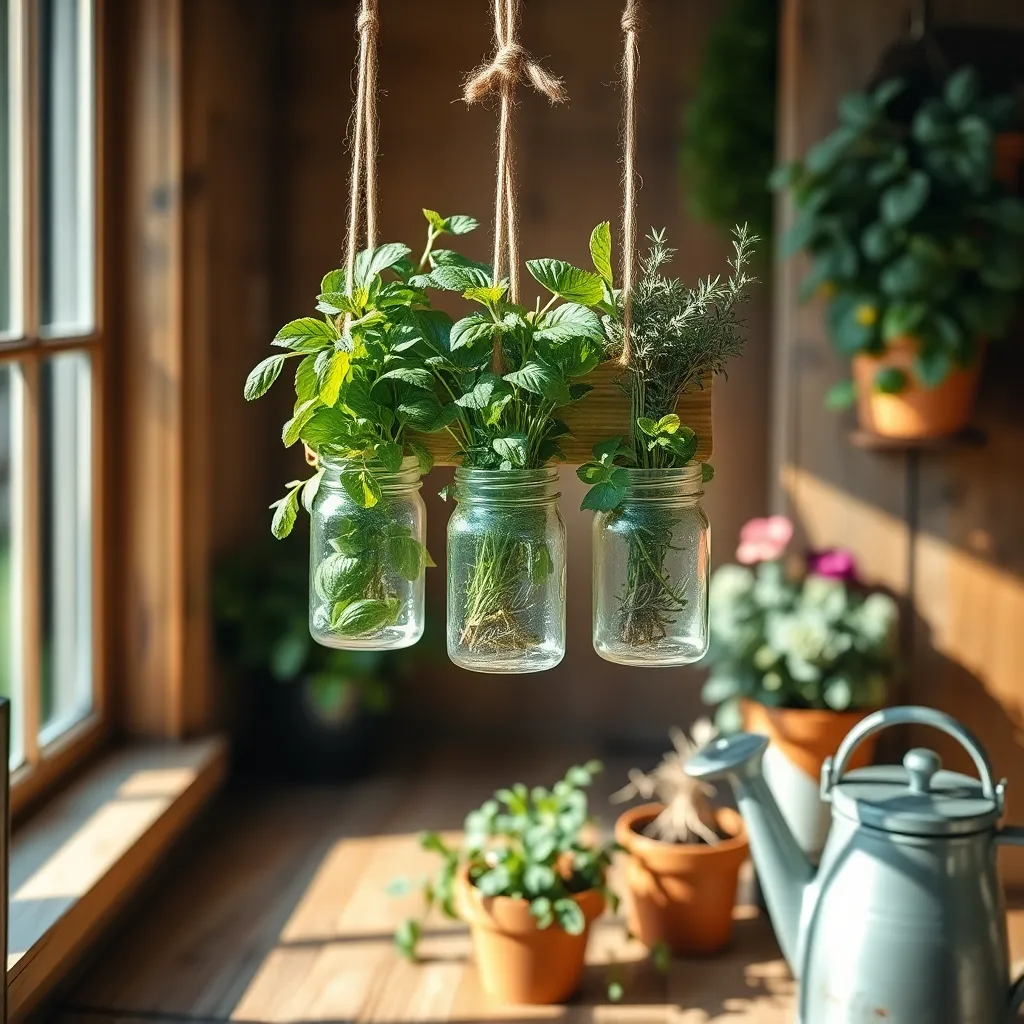
Hanging mason jar gardens offer a unique and space-saving way to grow herbs right in your kitchen. To start, you’ll need a few mason jars, some sturdy hooks or a wall-mounted rack, and potting soil suitable for herbs.
Choose herbs that thrive in small spaces and have similar light and water needs, such as basil, mint, or thyme. Make sure each jar has drainage holes at the bottom to prevent water from accumulating and causing root rot.
Fill each jar with a lightweight potting mix, leaving about an inch of space from the top. Plant seeds or small herb seedlings and water them lightly, ensuring the soil stays moist but not soggy.
Hang the jars in a location that receives ample sunlight, ideally near a south-facing window for best results. Rotate the jars occasionally so that all sides of your herbs receive equal sunlight, promoting even growth.
Craft Magnetic Fridge Planters
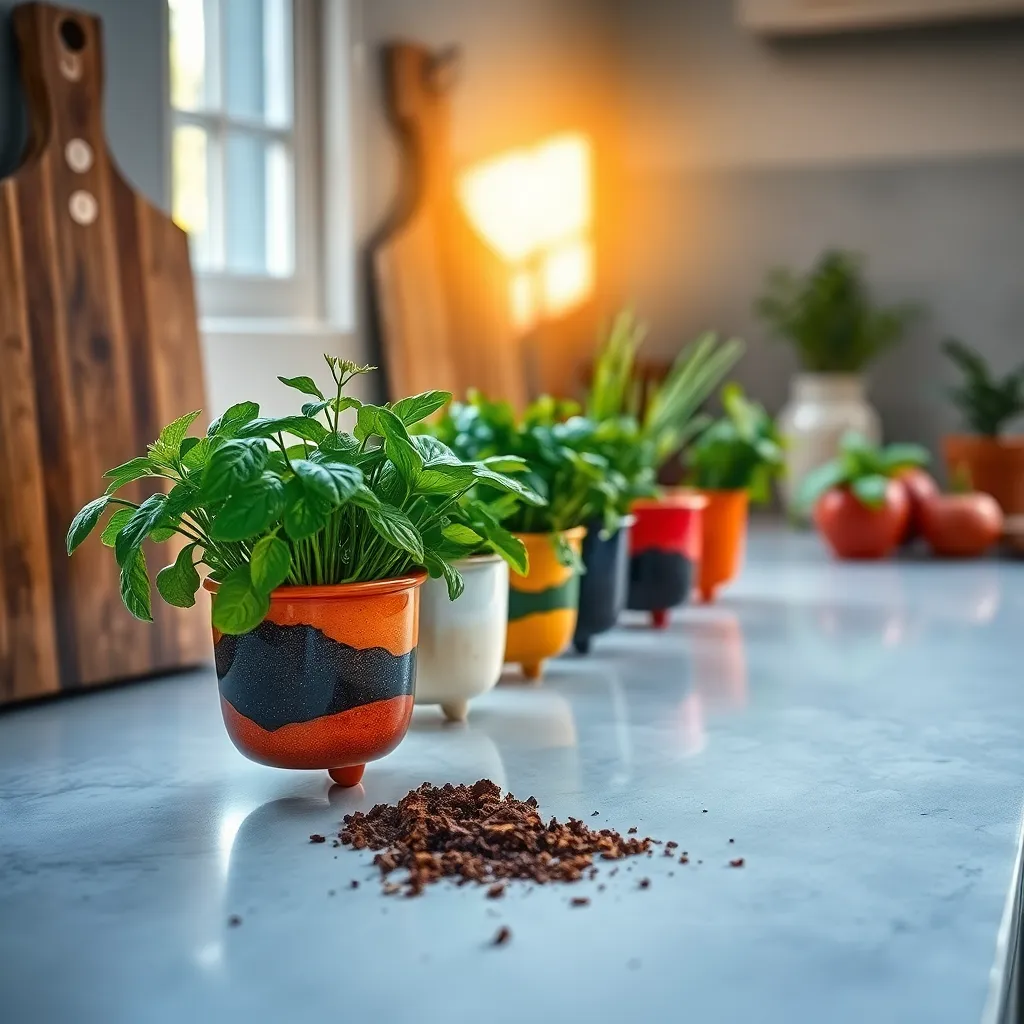
Transforming your fridge into a mini herb garden is both fun and practical. Magnetic fridge planters offer a creative way to keep fresh herbs within arm’s reach while adding a touch of greenery to your kitchen decor.
To get started, choose small, lightweight planters that can be easily attached to magnets. Make sure the magnets are strong enough to hold the weight of the potted herbs, soil, and water.
Use a lightweight potting mix that drains well, such as a blend of coconut coir and perlite. Herbs like basil, mint, and thyme thrive in these conditions and do well in limited soil space.
Place your magnetic planters on a part of the fridge that gets ample light, as most herbs need around six hours of sunlight per day. If your kitchen lacks natural light, consider using a small LED grow light to supplement.
Water these mini planters sparingly, ensuring the soil remains moist but not waterlogged. Check moisture levels regularly by sticking your finger into the soil to see if it feels dry an inch below the surface.
For experienced gardeners, try experimenting with different herbs or even small edible flowers to add color and variety. Regular trimming will encourage bushier growth and provide you with a continuous supply of fresh herbs right from your kitchen.
Repurpose Tin Cans as Pots
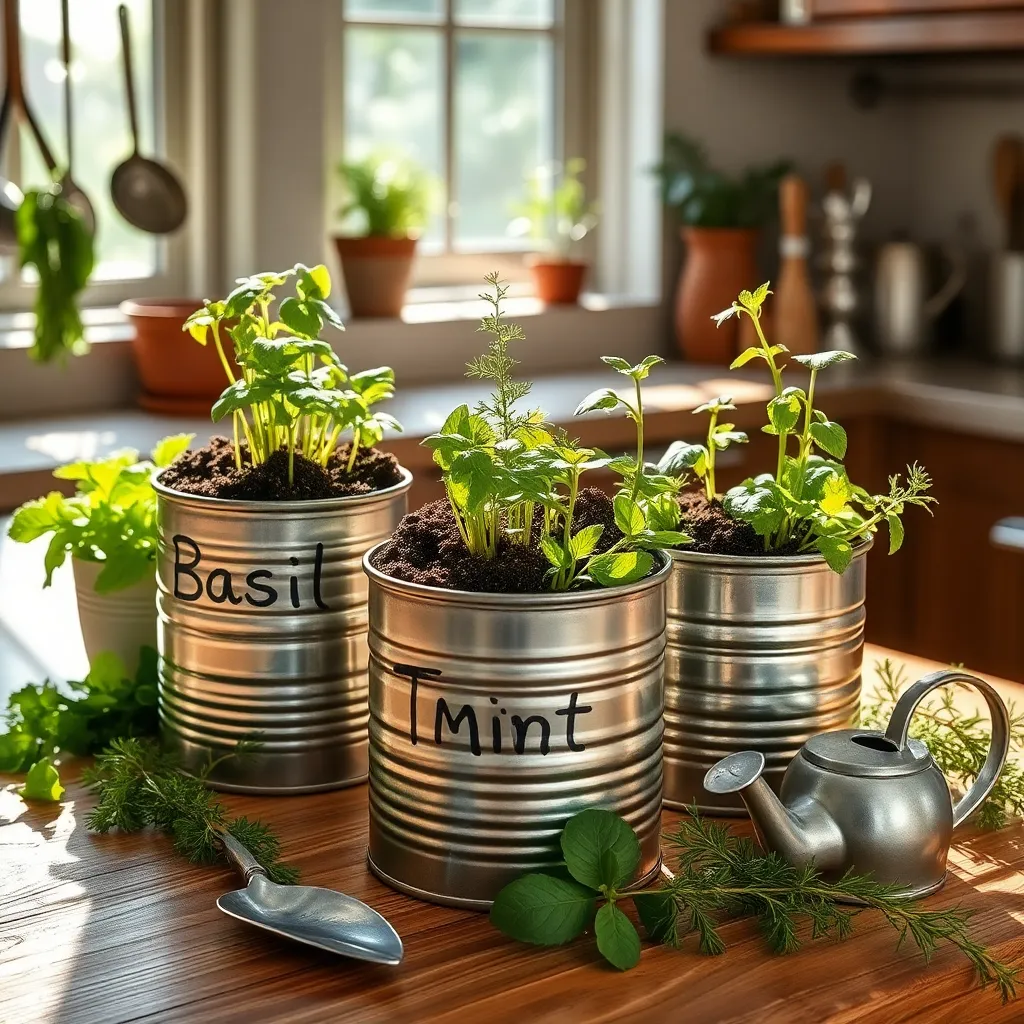
Repurposing tin cans as pots is an easy and sustainable way to bring a touch of green into your kitchen. Start by thoroughly cleaning the cans and ensuring there are no sharp edges that could harm you or the plants.
Next, drill a few small holes in the bottom of each can to allow for proper drainage, which is crucial for healthy herb growth. For optimal results, line the bottom of the can with a thin layer of gravel or small stones before adding soil.
Fill the cans with a light, well-draining potting mix that is specifically formulated for herbs. Consider using a mix that includes perlite or vermiculite to improve aeration and drainage, ensuring your herbs thrive.
Position your tin can planters in a bright spot, such as a windowsill that receives plenty of indirect sunlight. Most herbs, like basil and mint, require about 6 to 8 hours of light daily, so adjust their position as needed to meet this requirement.
Water your herbs when the top inch of soil feels dry to the touch, being careful not to overwater, as excess moisture can lead to root rot. For a more advanced approach, consider using a moisture meter to maintain the perfect balance of hydration.
Fertilize your herbs every few weeks with a diluted liquid fertilizer to promote lush growth and a bountiful harvest. Remember to prune regularly to encourage bushier growth and prevent your herbs from becoming leggy.
Create Vertical Herb Wall Displays
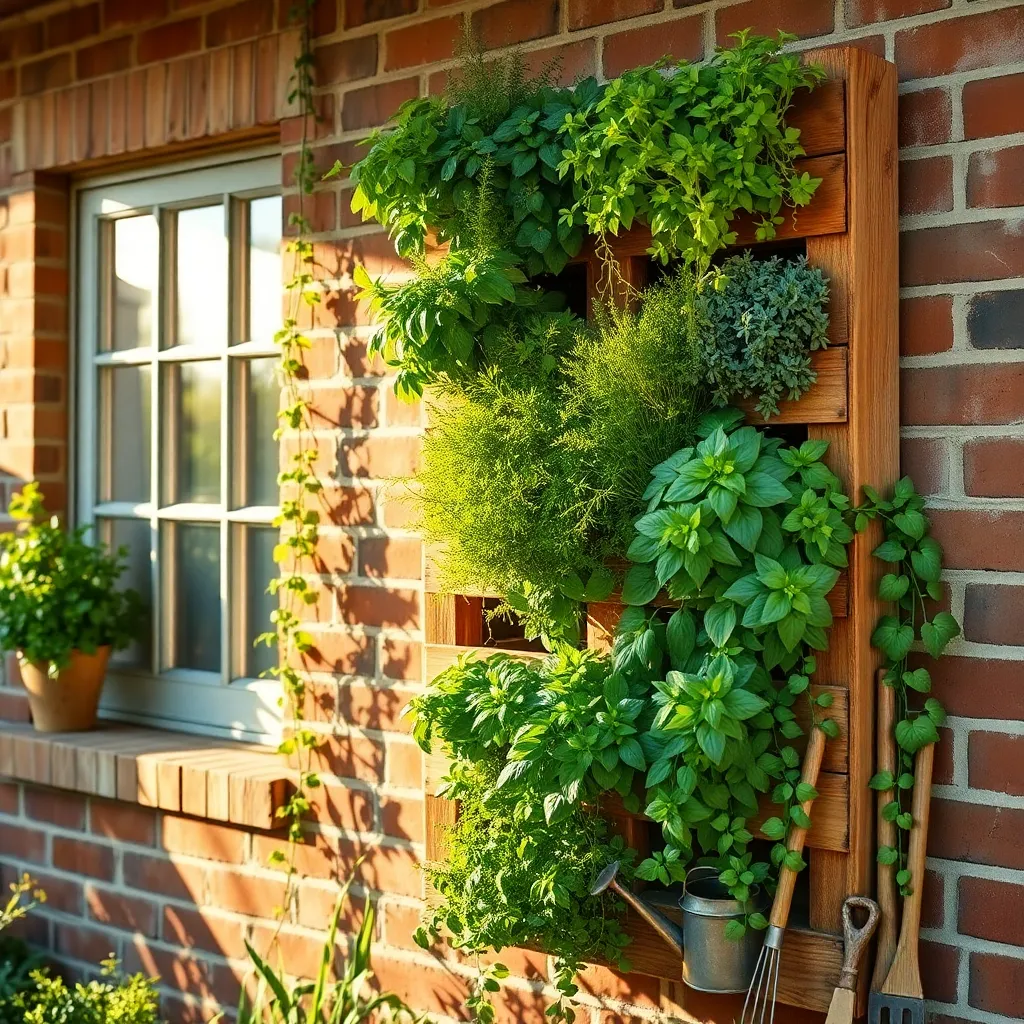
Transforming your kitchen into a green oasis is easier when you create vertical herb wall displays. These displays maximize space, making them perfect for small kitchens while adding a touch of nature to your walls.
Start by choosing a sturdy framework like a wooden pallet or a metal grid to support your herbs. Ensure the framework is securely mounted to prevent any accidents, especially if you plan to grow heavier plants.
When selecting herbs, consider varieties that thrive in your kitchen’s lighting conditions. Basil, parsley, and thyme are excellent choices for indoor growing, as they require moderate sunlight and can adapt to indirect light.
Soil selection is crucial for the success of your vertical herb garden. Use a well-draining potting mix, and consider adding a layer of gravel at the base of each pot for improved drainage.
Watering can be tricky with vertical gardens, so check moisture levels regularly. Aim to keep the soil consistently moist but not waterlogged, and use a spray bottle for even distribution.
For advanced gardeners, consider installing a self-watering system to maintain even moisture levels. This can be a simple DIY project using a drip irrigation kit, ensuring your herbs receive just the right amount of water.
Conclusion: Growing Success with These Plants
In exploring ‘Creative Ways to Grow Herbs in Your Kitchen’, we’ve unearthed five key concepts that mirror essential relationship-building principles: nurturing growth through consistent care, fostering creativity and adaptability, cultivating a supportive environment, embracing patience, and celebrating small victories. Each of these not only enhances your kitchen garden but also fortifies your connections with loved ones, reminding us that relationships, much like herbs, flourish with attention and love.
As an actionable next step, consider dedicating time this week to plant a new herb together with a loved one. Use this as an opportunity to nurture your relationship alongside your garden, witnessing growth in both.
Don’t let these insights drift away with time. Save or bookmark this article now to revisit these nurturing strategies and inspire ongoing growth in your relationships.
Looking ahead, remember that relationship success is a journey enriched by creativity, patience, and shared experiences. By embracing these concepts, you’re taking powerful steps towards deeper, more fulfilling connections. Let this be the beginning of a flourishing garden and a thriving relationship landscape.

